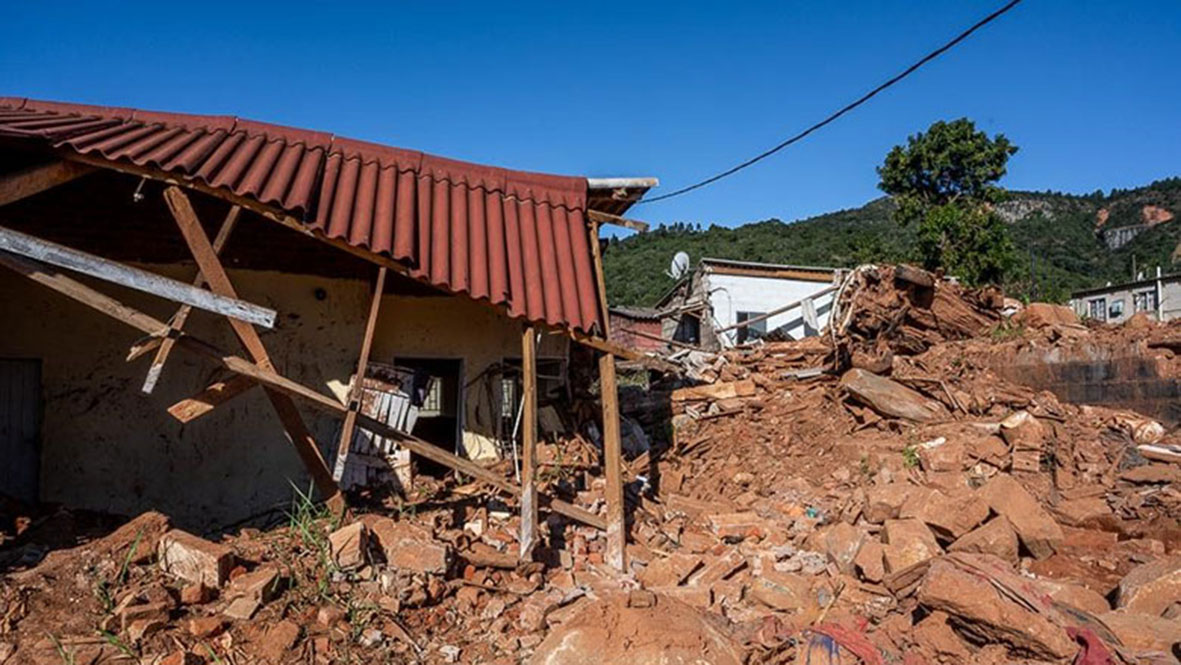
One of the most popular responses to drought and disasters more generally by aid agencies today is insurance.
This fits the current development mood, requiring market-based solutions that operate at a distance and work seemingly “efficiently” offsetting the need for cumbersome, late responses of State or development agency delivered humanitarian aid.
It all sounds good in theory, but what is the reality? This was a theme we explored in Zimbabwe both in the field with farmers across our sites, as well as in Harare with some of those managing a new insurance approach for drought response, sponsored by the Africa Risk Capacity Group, (ARC) and supported by multiple donors.
Types of insurance
Insurance comes in many shapes and forms. There is classic indemnity insurance where if a disaster strikes an assessor will estimate the damage and pay out if you have a policy. This is the sort of insurance you have in case your house burns down or you crash your car.
Index-based insurance by contrast aims to pay out before the event happens. This provides early response and avoids the dangers either of later payment or of emergency responses that can undermine people’s livelihoods in the longer term. Here pay-outs occur if a threshold is crossed, say of rainfall or its proxy, such as vegetation cover. Index-based policies have become quite popular for agricultural and livestock insurance in developing countries, for instance.
A final type is sovereign insurance where a whole country takes out a policy against drought (or some other disaster) and the pay-out happens again if a threshold (the “attachment point”) is crossed (such as below average rainfall across the country, assumed to be affecting a certain number of people). This is aimed at ensuring “early action” as part of an anticipatory approach to assistance, which again does not have to wait for the mobilisation of international funds after the event.
Sovereign insurance: The Africa Risk Capacity model
- Chamisa under fire over US$120K donation
- Mavhunga puts DeMbare into Chibuku quarterfinals
- Pension funds bet on Cabora Bassa oilfields
- Councils defy govt fire tender directive
Keep Reading
This “sovereign insurance” is what the Government of Zimbabwe has recently bought from ARC (US$2,5m) in partnership with the UN World Food Programme (US$1,5m) and the START network (US$2,5m) (a consortium led by international NGOs involved in humanitarian assistance with 20 members in Zimbabwe), who run “replica” programmes paid for by international aid donors. The model will pay-out when an estimated 3,3 million people are affected (the attachment point), with a response cost of US$154m, and so is designed for a major national disaster not for regular responses to food insecurity.
However, the ARC approach, which is an African Union initiative, with separate development and commercial arms, has had a chequered history.
For example, in 2016 the insurance failed to pay out in Malawi during what was clearly on the ground a disastrous drought. In the end an ex gratia payment was made, but the approach was seriously critiqued in a damning Action Aid report which argued that this was the wrong model for improving resilience. Despite its many promoters in the aid agencies, the ARC lost credibility and there was a period when it looked like it would collapse with insufficient country subscribers and too little funding to reinsure.
A preliminary evaluation by OPM suggest some major flaws, particularly in the way the underlying “AfricaRiskView” model was constructed.
Since then, there have been multiple efforts at improving the system and customising the underlying model. Zimbabwe has bought into a very different operation, with the model being calibrated with local information through a committee, led by the Ministry of Finance, with many experts from the ministry of agriculture (Agritex) as well as aid agencies and NGOs. Although details of the model are secret they are proprietary information of the commercial arm of the ARC, and the basis on which it presumably gears a profit from its assessment of risks there is clearly more local participation and transparency than before. Those who have premiums invested can monitor the progress through the season, assessing if a pay-out is likely.
The implementing agencies, whether government, the World Food Programme (WFP) or the START network, must come up with a contingency plan for how they will deliver assistance in case a pay-out is made. The current policy aims to reach up to 800 000 people in drought-prone districts if a full pay-out occurs. This is supposed to mean that things can happen quickly and before the worst impacts of a disaster strike.
Contingency plans currently involve the usual array of targeted interventions, with all the problems that these entail, but the principle of early action and rapid response is definitely a good one; although such plans need to be held in place and updated in all the years in between pay-outs (the ARC deal for Zimbabwe expects, but does not guarantee, a one in four year pay-out; the assumed “return period”).
Practical concerns
How will it work it practice? This is the first year with the latest round of insurance, so the simple answer is we do not know. Past experience is limited in Zimbabwe, as there has only been one payment from a previous round in mid 2020 of US$1,4 million to the government and around US$ 300k to WFP (as the replica premium holder) following the poor rains of 2019-20.
- This article first appeared on Zimbabweland website











